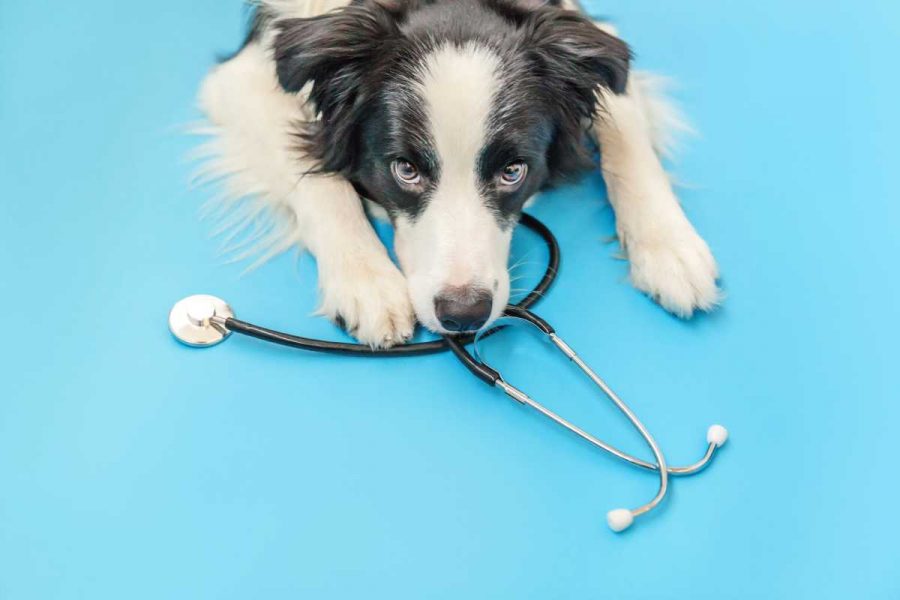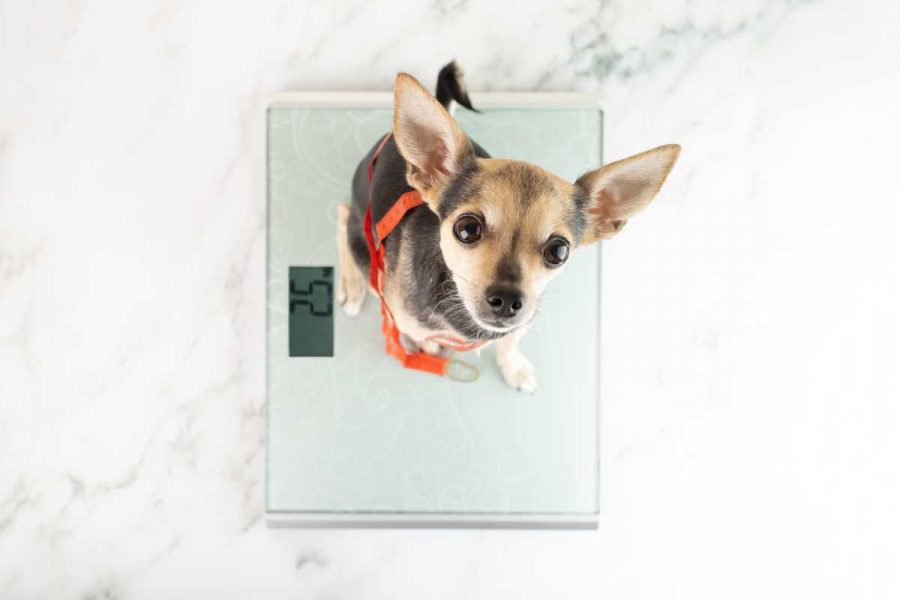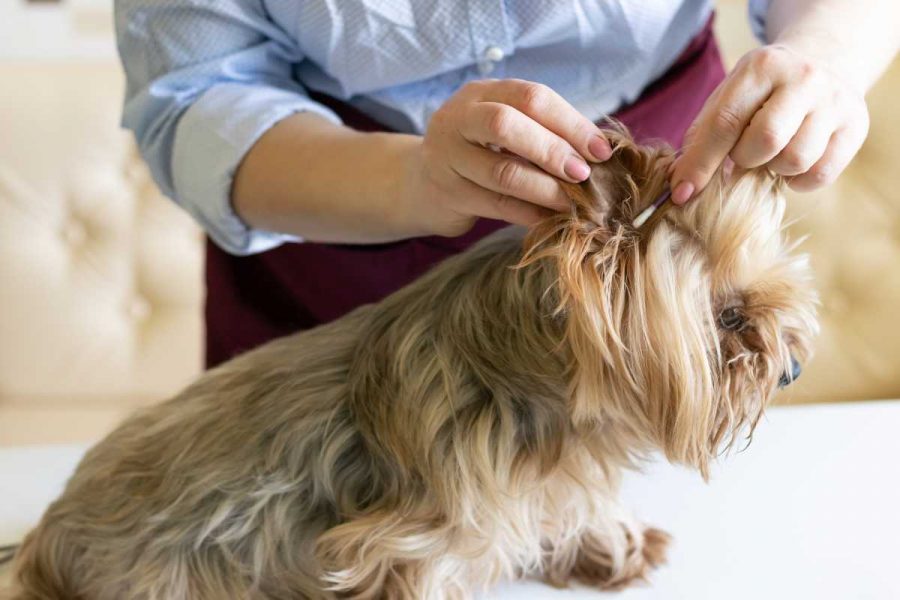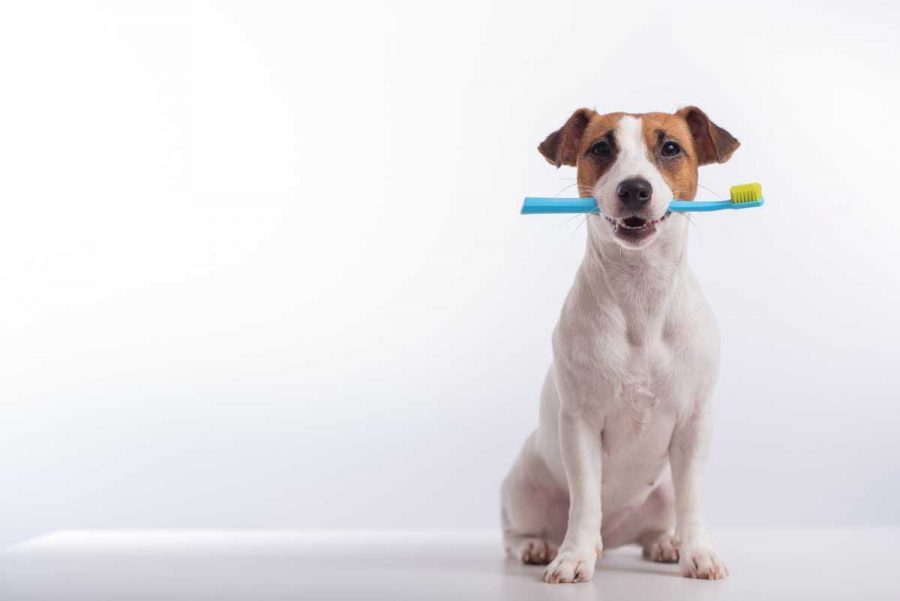By adopting a pet, we commit to taking care of them on a daily basis, which involves ensuring their health. However, since they are not endowed with speech and always eager to please their human, dogs do not always clearly show when they are not feeling well. Monitoring your dog’s health therefore involves carefully inspecting various parts of their body and observing their behavior on a daily basis. Monitoring that can now be greatly facilitated by the use of applications dedicated to animal health.

How Do I Know If My Dog Has Health Problems?
To prevent the onset of illness, there are no other solutions than to spot any potential signs on your beloved four-legged companion’s body. A task that may seem tedious, yet you may be doing it every day without even realizing it. Simply by petting your dog, for example, you may notice the presence of a wound, a mass, or anything else abnormal.
So, to help you monitor your dog’s health effectively, here is a checklist of what you should keep an eye on:
His Weight
Overweight or obesity is a risk factor for your dog. Diabetes, arthritis, many diseases are favored by weight problems. But with the eyes of love, it is not always easy to be objective about your furry companion’s physical condition. To check that your animal is not overweight, the foolproof benchmark is: its ribs. If you can easily feel them, it is not overweight. On the other hand, if you have to press to feel its ribs hidden behind a layer of fat (more or less significant), it is likely that your beloved furry companion has a few extra pounds.
A discussion about its diet with your veterinarian is then necessary.

Nutrition
Dry food or wet food, dry food and wet food, homemade food, the choices for feeding your dog are numerous. The golden rule is: balance. The food must be of good quality to meet your dog’s needs, and the quantities must be adapted to its lifestyle. A dog accustomed to sports such as canicross or agility will not have the same bowl as an urban dog confined to leash walks.
Don’t forget the impact of sterilization, which reduces the animal’s energy needs by 20 to 30%. Much to your dog’s regret, you will have to reduce the quantities if you sterilize it.
Nutrition is a crucial point in keeping a dog healthy, but it’s not something to be improvised! It is important to always seek advice from your veterinarian to ensure that all its nutritional needs (e.g., vitamins) are met.
Skin and Coat
Healthy skin and a shiny coat are often signs of good health. Symptoms that can alert you include the presence of dandruff, fleas, crusts in its coat, or even numerous broken hairs.
Regular brushing is very useful for removing dead hair and preventing your dog from ingesting too much hair during its grooming.
Ears
Your dog’s gentle gaze must also be healthy. This is why a red eye or discharge should prompt you to make an appointment with your veterinarian.

Mouth
Who has never laughed at their pet’s bad breath? Yet, this bad breath can be a sign of much less funny problems like dental problems or digestive disorders. So, don’t take your dog’s breath lightly.
Moreover, red or swollen gums should also alert you. The mouth can be the site of inflammation or infections that can have repercussions on other organs.

Claws
In general, the paws should regularly be inspected. Brittle claws, a torn claw, pads damaged by cold or heat can be very painful for your animal and require veterinary care.
Stools
“Tell me what your stools are like and I’ll tell you what you have.” By monitoring your dog’s stools, you can determine if the food you are giving it is suitable. Liquid stools, very odorous, or on the contrary very solid indicate that the food you give to your animal does not suit it.
Moreover, sudden diarrhea or the presence of mucus or blood should prompt you to consult a veterinarian quickly.
Which Application to Monitor Your Dog Effectively?
Technological advances are at the service of humans, but also animals. We can now use connected collars to monitor our dog’s health. Like the Kippy collar, which also offers a GPS function, these accessories allow you to be alerted when your animal changes its behavior, even before you notice it.
How does it work? The collar is equipped with an algorithm specially designed for animals that detect its different activities such as its running time, playtime, sleep time, number of steps, etc. Data that you will find on a dedicated application. Thus, at the slightest change in behavior, you receive a notification and can easily monitor your animal more closely.
This article might also interest you: How to get read of fleas
